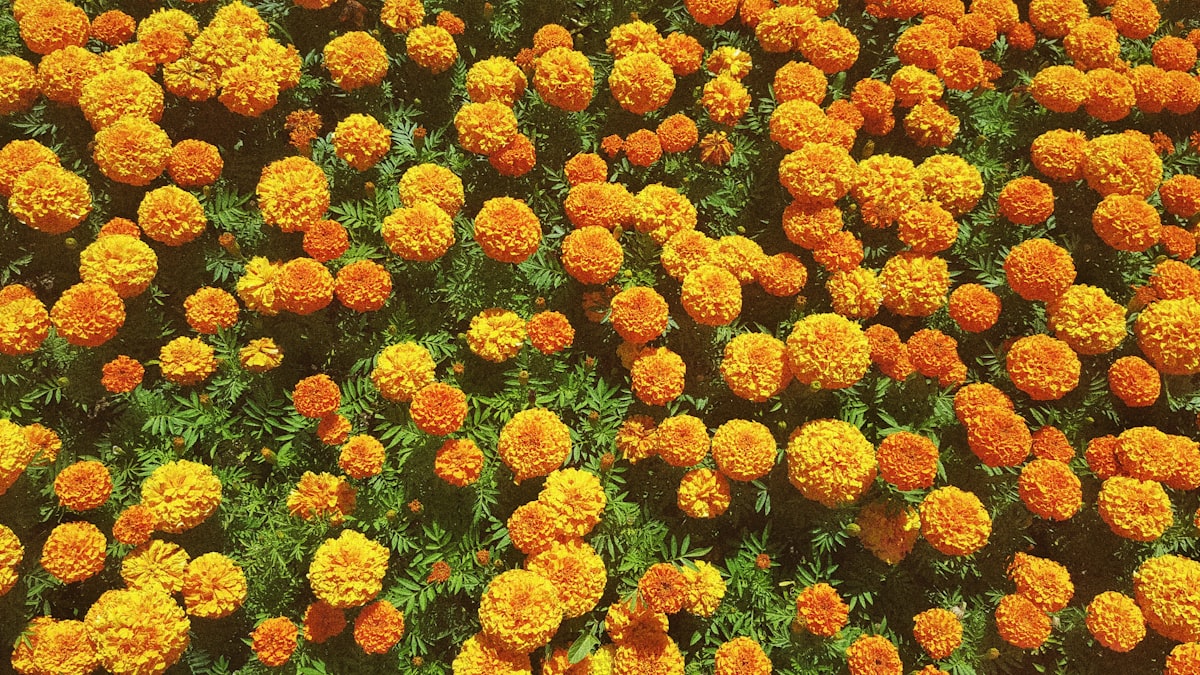Climate change takes its toll on marigold blossoms
Marigold flower plantations, located in the central valley of Oaxaca, where today the color orange predominates, delight the eye and the senses in autumn, however, these are unfortunate times for producers due to climate change and the massive invasion of plants from China.

The cempasúchil flower cultivation lands, located in the central valley of Oaxaca, where today the color orange predominates, delight the eyes and senses in autumn, however, these are unfortunate times for producers due to climate change and the massive invasion of plants from China.
Oaxaca is one of the 10 producing entities of the flower, which takes notoriety during the celebration of the Dead and the Faithful Departed, when the largest production of cempasúchil and cockscomb or tassel is registered, which adorn the altars, because it is said that "together with incense and copal, it serves to guide the dead back to the world of the living, to go to their former homes".
In the state, the Secretariat of Agricultural Development, Fishing, and Aquaculture (Sedapa) has a record that in the regions of the Valles Centrales and Mixteca, mainly, around 47 hectares of land are used for cultivation. The lands of La Ciénega Zimatlán, Zaachila, San Antonino Castillo Velasco, Tlacolula, Mitla and Valle de Etla are covered with cempasúchil or "flower of the 20 petals".
The Servicio de Información Agroalimentaria y Pesquera (SIAP) reported that in 2018, 320 tons of flower were produced in the state, however, in the following years, the production was slightly lower, due to the situation of the rains that were delayed in 2019 and 2020, although, the production was guaranteed.
Shortage of water is the greatest difficulty
José Luis García Casas, cempasúchil flower producer in the community La Libertad Xochimilco, in the municipality of Magdalena Apasco Etla, maintained that the greatest difficulty he faced last year in the production of cempasúchil was the lack of rains promptly.
"The year of the pandemic was complicated because the rains fell very late and this forced us to resort to irrigation so that our flower production could be achieved. With climate change we do not know if it will be wet, cold, or hot, "he said.
Based on this experience, the producer worked on adaptation alternatives to prevent the development of the plant from being affected by climate changes; he made adjustments at the time of transplanting the cuttings into the ground so that the plant's reproduction process would begin, and "the dates would not beat it".
According to him, this year he only planted a quarter of a hectare of cempasúchil and borla. The cempasúchil begins to be harvested in July and is harvested in early to mid-October. After that, it is sold in 15 to 20 days, together with the first days of November; otherwise, it translates into economic losses.
Like José Luis, other farmers in this part of Magdalena Apasco, in the neighboring towns of the Etla Valley, start growing cempasúchil in August and harvest in the last week of October; a business that supports their respective families.
The threat of the rising sun
Currently, the Mexican marigold market is dominated by the pot marigold variety; it arises from the cultivation of imported and modified seeds in countries such as China and India. However, this variety has proven to be unsustainable for the Mexican countryside as it has forced growers to abandon native varieties. The seeds have been genetically modified to achieve more intense colors and shorter growth cycles.
Angélica Cervantes Maldonado, a specialist in priority species of the National Commission for the Knowledge of Biodiversity (CONABIO) informed that the popularity of the cempasúchil, known as marigold, is the one that is massively promoted in the market because it is small in size and easy to transport in pots. This variety is considered "withered" because it is unable to germinate and does not generate oils, so it does not emanate the characteristic odor.
Given the importance of rescuing the native cempasúchil, he specified that the Mexican species correspond to tagetes erecta and tagetes patula, they have ideal size and are sold in bunches. This variety generates fertile seeds and can be stored for cultivation. "By acquiring native flowers, we contribute to preserving the diversity of native plants cultivated and developed in the Mexican countryside," said the biologist.
Source: Oro Radio




